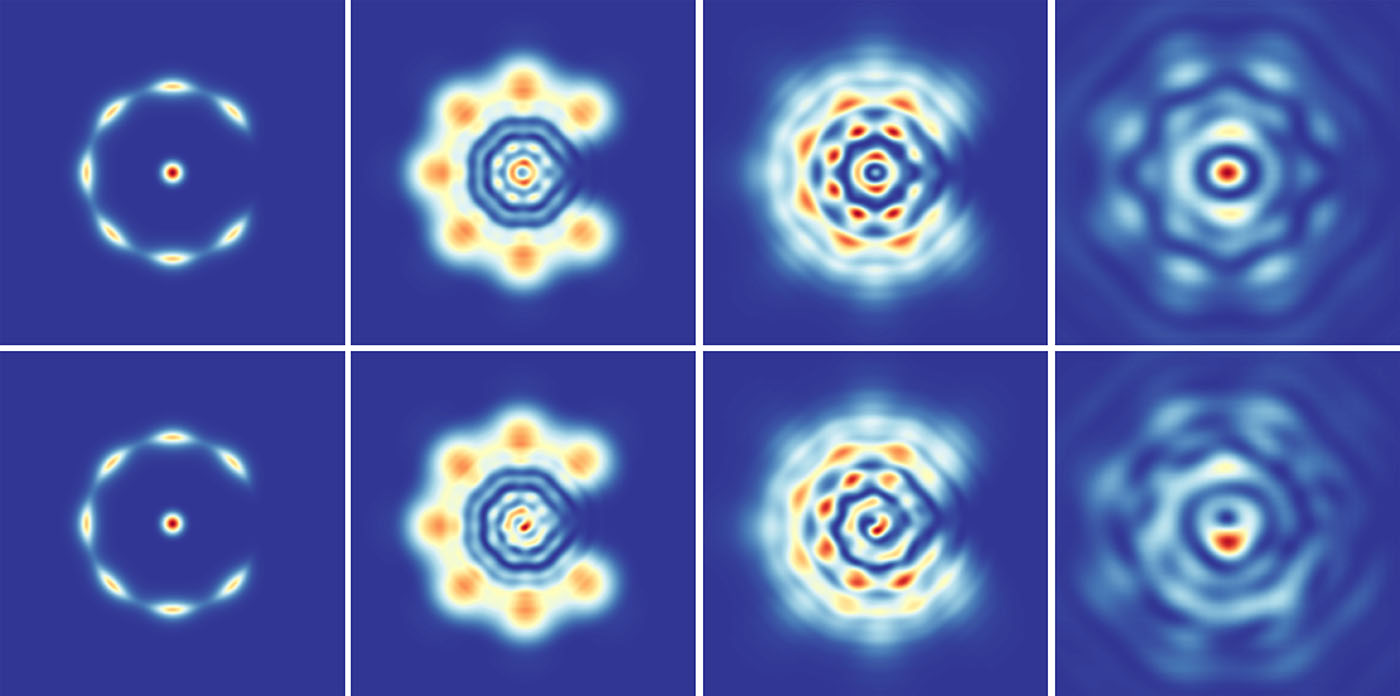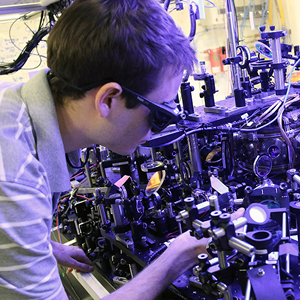Highlights
Simulation of superfluid atom rings paves way for experiments
 Computer simulations by CQT researchers suggest a way to measure the quality of atomic quantum interference devices (AQUIDs). The work is published in Physical Review A 97, 013633 (2018).
Computer simulations by CQT researchers suggest a way to measure the quality of atomic quantum interference devices (AQUIDs). The work is published in Physical Review A 97, 013633 (2018).
These kaleidoscopic patterns come from a CQT paper on ‘atomtronics’ – the idea of building devices based on circuits through which atoms, rather than electrons, flow. Such analogues of electronic devices have potential for quantum computing and sensing.
Reported in Physical Review A in January, the patterns are the results of computer simulations of atoms flowing through a ring-shaped trap. Singapore newspaper The Straits Times featured other images from the paper in its Beautiful Science section on 3 May.
The ring configuration is the atomtronic equivalent of a Superconducting Quantum Interference Device (SQUID), a leading hardware contender for building quantum computers.
The CQT groups of theorist Kwek Leong Chuan and experimentalist Rainer Dumke are collaborating to perform the first tests of AQUIDS on a lattice. Their teams include Tobias Haug and Luigi Amico, who are co-authors on the paper.
Also co-authors on the Physical Review A paper are two students who joined the project while they were in Junior College in Singapore, later working as interns under Kwek’s wing. The students Joel Tan and Mark Theng worked on the simulations even during their two years’ National Service. “They were pretty good at programming and quite systematic. This is good, because we need computing in physics,” says Kwek.
Better on a lattice
Quantum groups elsewhere have studied AQUIDS that use continuous ring-shaped traps, interrupted by a barrier. The difference in the CQT configuration is that the ring sits on a lattice. In these simulations, the lattice has eight sites, leading to the petals in the flower-like images above. There are only seven petals because one of the sites is blocked, creating a barrier to interrupt the atoms’ flow.
The images show red where the atoms are densest and blue where space is empty. In the left-most picture, the atoms are divided between a central pool and a corrugated ring. Over time – the images from left to right cover a period of some 15 microseconds - the atom clouds spread out and their quantum states interfere, like ripples in a lake.
Look carefully to spot the difference between the top and bottom row: a spiralling in the pattern. This happens because the atoms in the bottom row started off rotating around the ring, flowing like a superfluid. There are proposals to use these still and rotating states to encode the 0s and 1s of data or to detect rotational motion.
AQUIDS on a lattice are expected to have better properties than continuous AQUIDS for acting as qubits. A good qubit is easily flipped between its two states (or put into a superposition thereof), requiring an appropriately-sized energy gap. The best qubits are also hard to knock into other states – such as one with faster flow.
Lords of the rings
The CQT researchers’ paper presents a method to make direct measurements of the quality of an AQUID qubit, tested with simulations that use different models and parameters. Rainer is now preparing to make the measurements on real systems in his group’s laboratory at the Nanyang Technological University.
In the lab, the lattice and trap shape are created with laser light. After testing the ring shapes, the group will also explore other configurations, such as rings having input and output wires.
“The cool thing about atomtronics is that you make the circuits with laser light, creating the shapes for the atoms to move in, so it’s completely interchangeable. If you have a device with atoms and lasers, you can reprogram it to do whatever you can think of, as often as you want,” says Tobias, a CQT PhD student and the paper’s first author.









